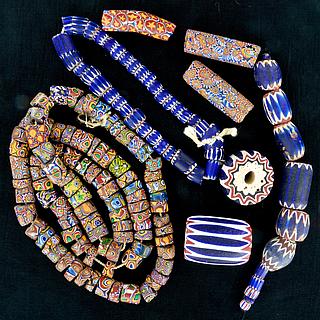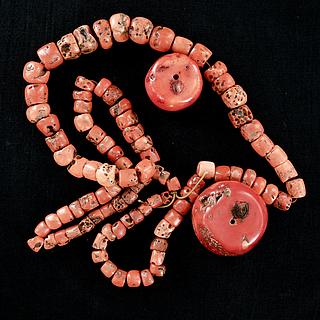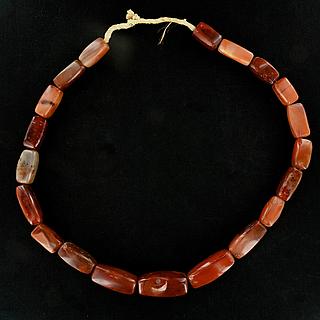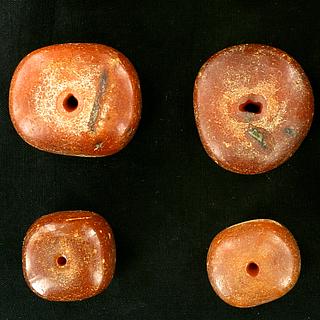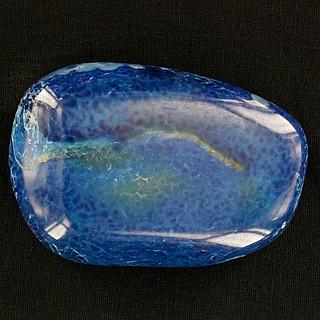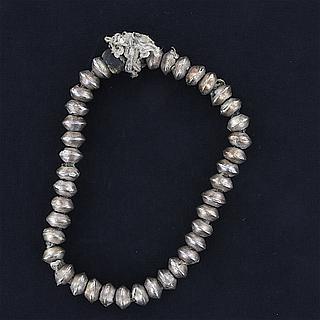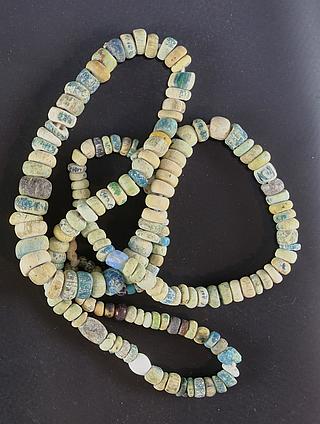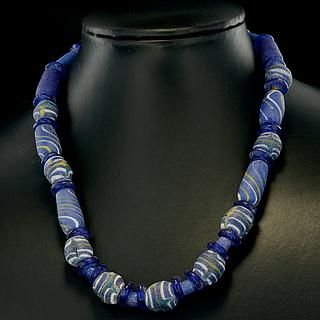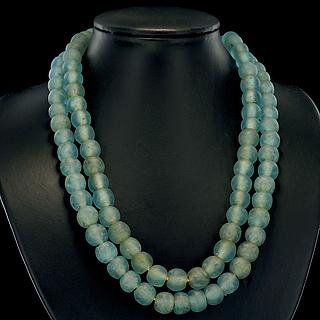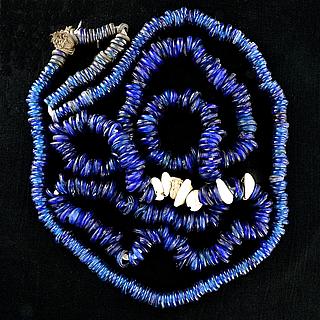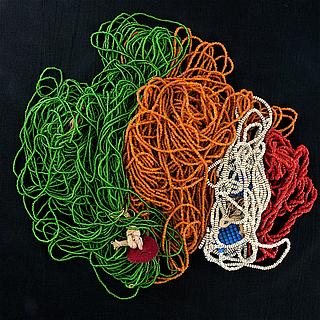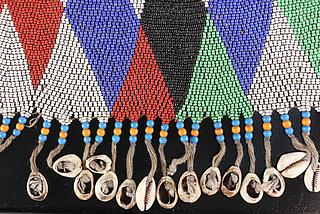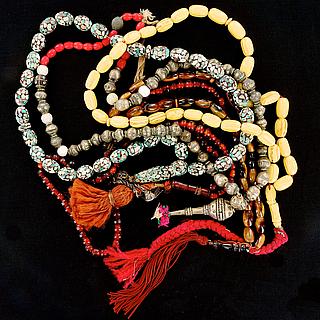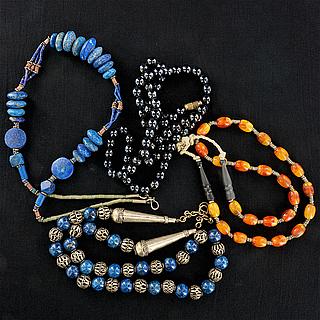BEADS & BEADWORKS 05
Extract from "Africa adorned: A long history of beads and deeds" by Rhodia Mann ; rhodia.mann@yahoo.com
Man has worn beads since time began, in rituals and ceremonies, for beautification, for talismanic purposes or healing, to denote status, or as symbols of wealth.Beads were also used as trade items. In Africa particularly, history is inextricably intertwined with beads.The earliest African beads were made from shell, bone, horn, seeds, teeth, ivory, wood, or other organic materials. Cowries and conus shells have been used as adornment throughout Africa. Ostrich eggshell beads were made in South Africa as well as by the Turkana people in northern Kenya. Red coral from the Mediterranean became popular with tribes with access to it, such as the Berbers of Morocco. Amber (resin from an ancient fossilized tree) from the Baltic was first traded to Africa by Arab merchants in the 7th century. Copal, a much more recent resin, was indigenous to both Senegal and Zanzibar. The oldest stone-bead industry in Africa was in Nigeria, dating to the first millennium B.C. The beads were made of red jasper. In Mali, beads have been cut from granite, green amazonite and agate for centuries. In Ghana, beads are still being made from bauxite, an aluminium ore collected in Niger. It is not known when metal bead-manufacturing began in Africa. Tin beads have been found in Nigeria dating to the first millennium B.C. By the 8th century, Nigerian metal smiths were making brass and bronze beads and ornaments using the “lost wax†method of casting. Iron beads have been made by the Turkana in north-western Kenya for many generations. Today, Borana tinsmiths in northern Kenya make small beads from recycled aluminium cooking pots.The history of glass beads is difficult to trace. By the 16th century, glass-bead manufacturing centred in Bida (Nigeria), and also in south-eastern Ghana, as well as in the central Ashanti area. These beads were made in clay moulds, using finely-powdered glass made by recycling imported bottles and jars. Meanwhile, in Europe, large-scale bead-making centres had evolved. The oldest was founded in Venice – possibly as far back as the 13th century. Later, the industry spread to Germany, Holland and Bohemia. Venice, Germany, Holland and Bohemia engaged in a highly lucrative trade with Africa, exchanging beads for such items as gold, ivory, palm oil, coconut oil and incense.Beads later became a major exchange commodity in the slave trade, which lasted for 450 years. It is estimated that many millions of European glass beads were traded during this dark period of African history. Other beads were offered to chiefs by white explorers when seeking permission to travel through tribal territories.Dating beads is difficult, but Bead Museums and private collections yield useful information, and ship’s logs give us data on cargoes of beads.

